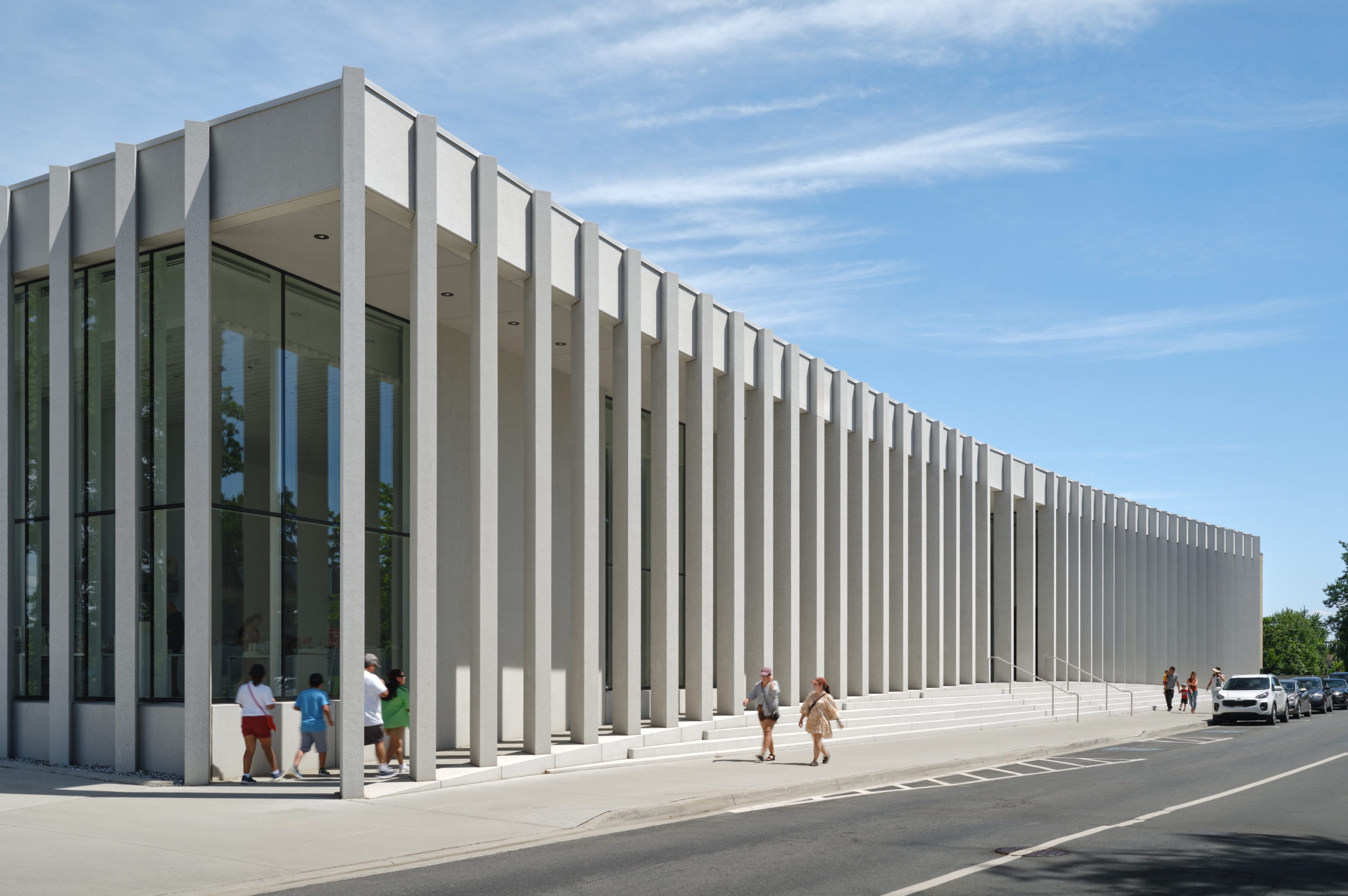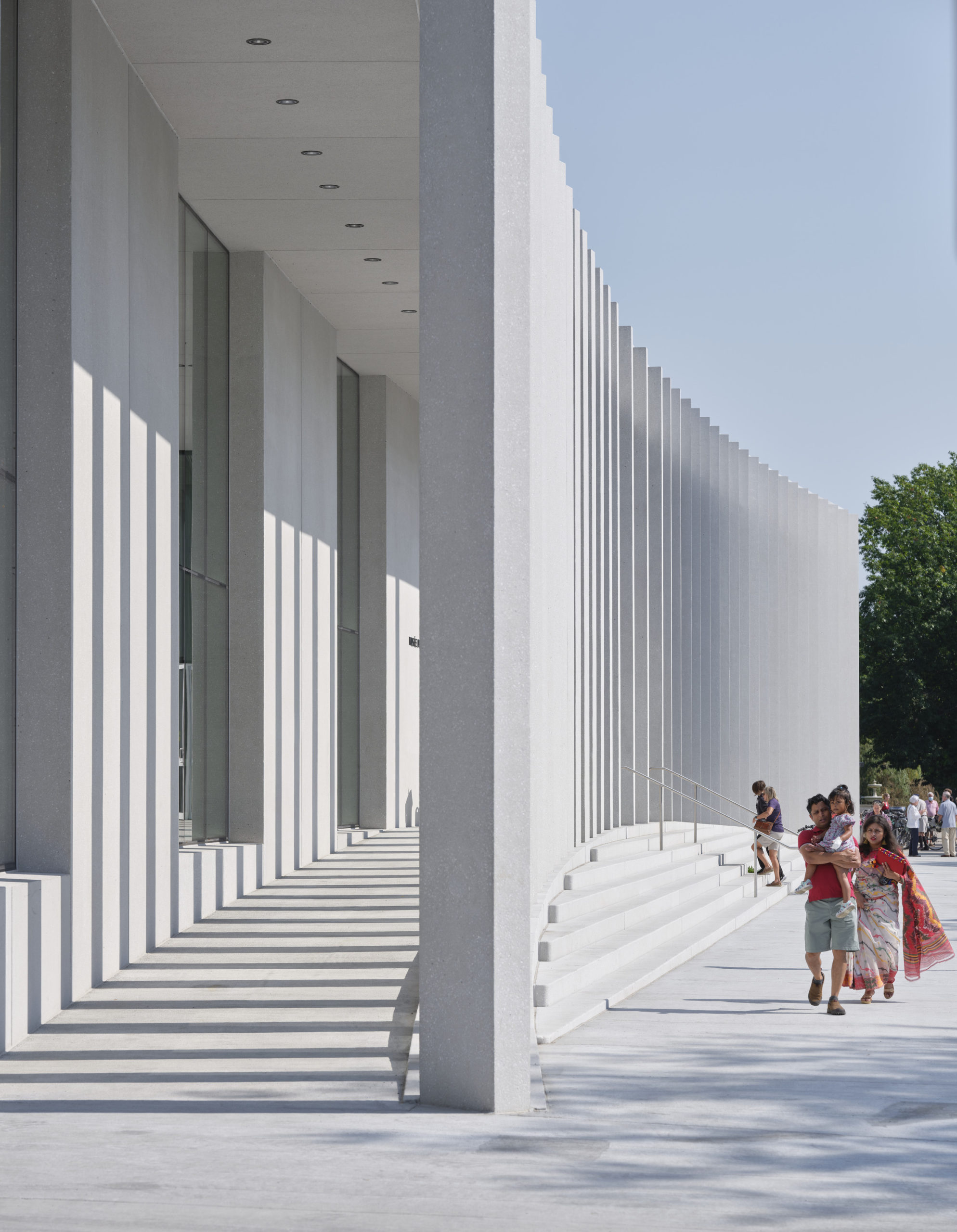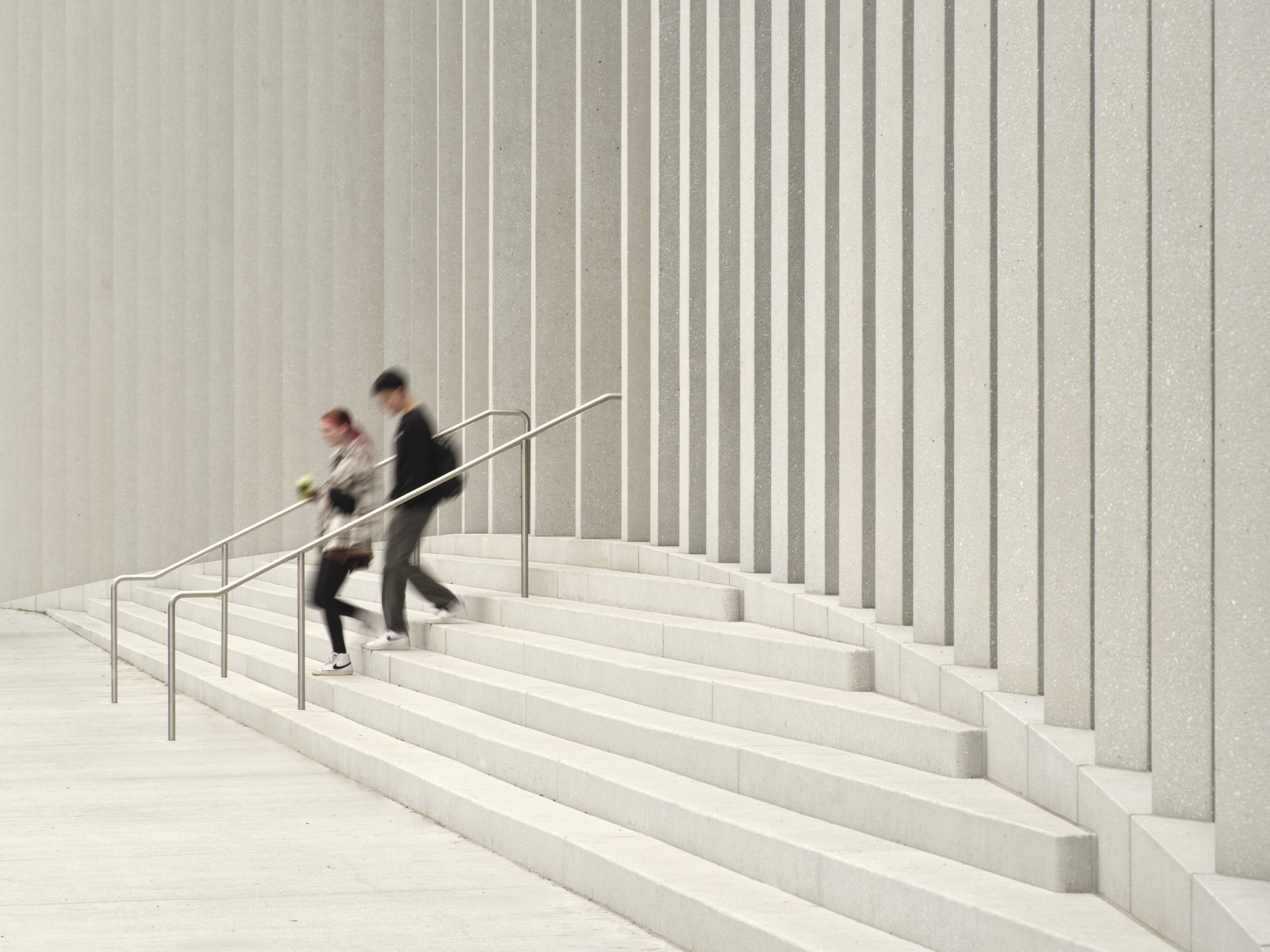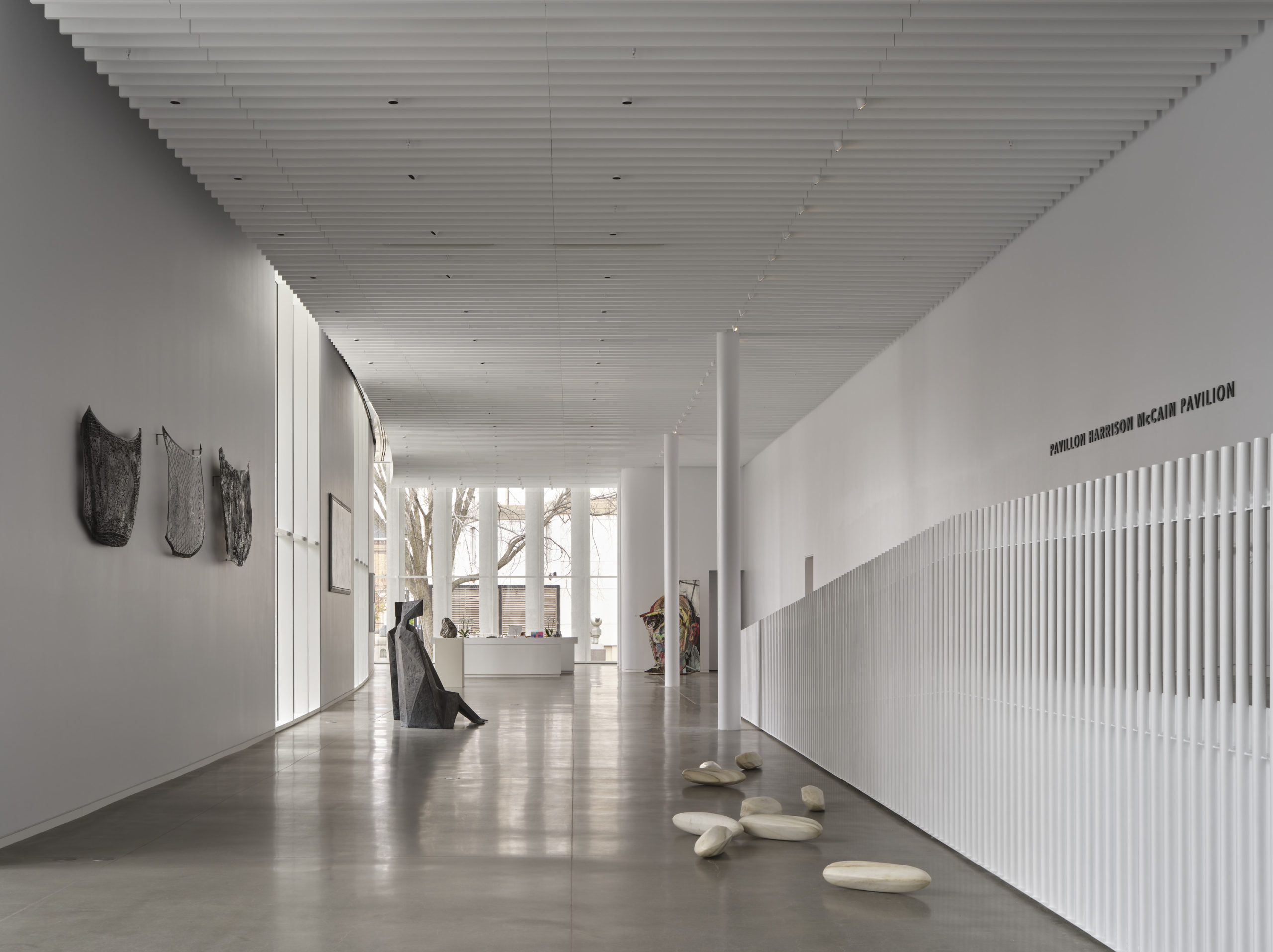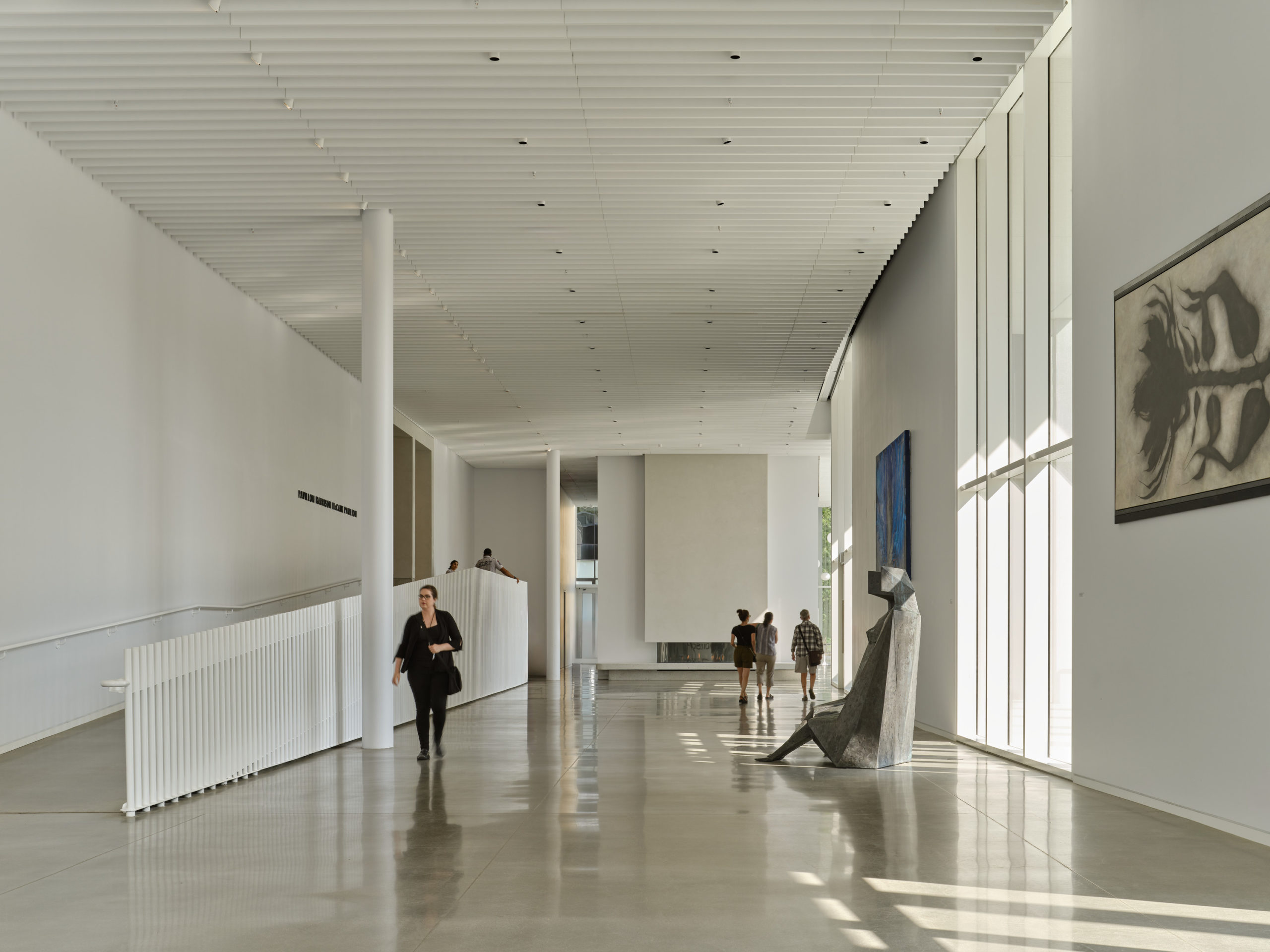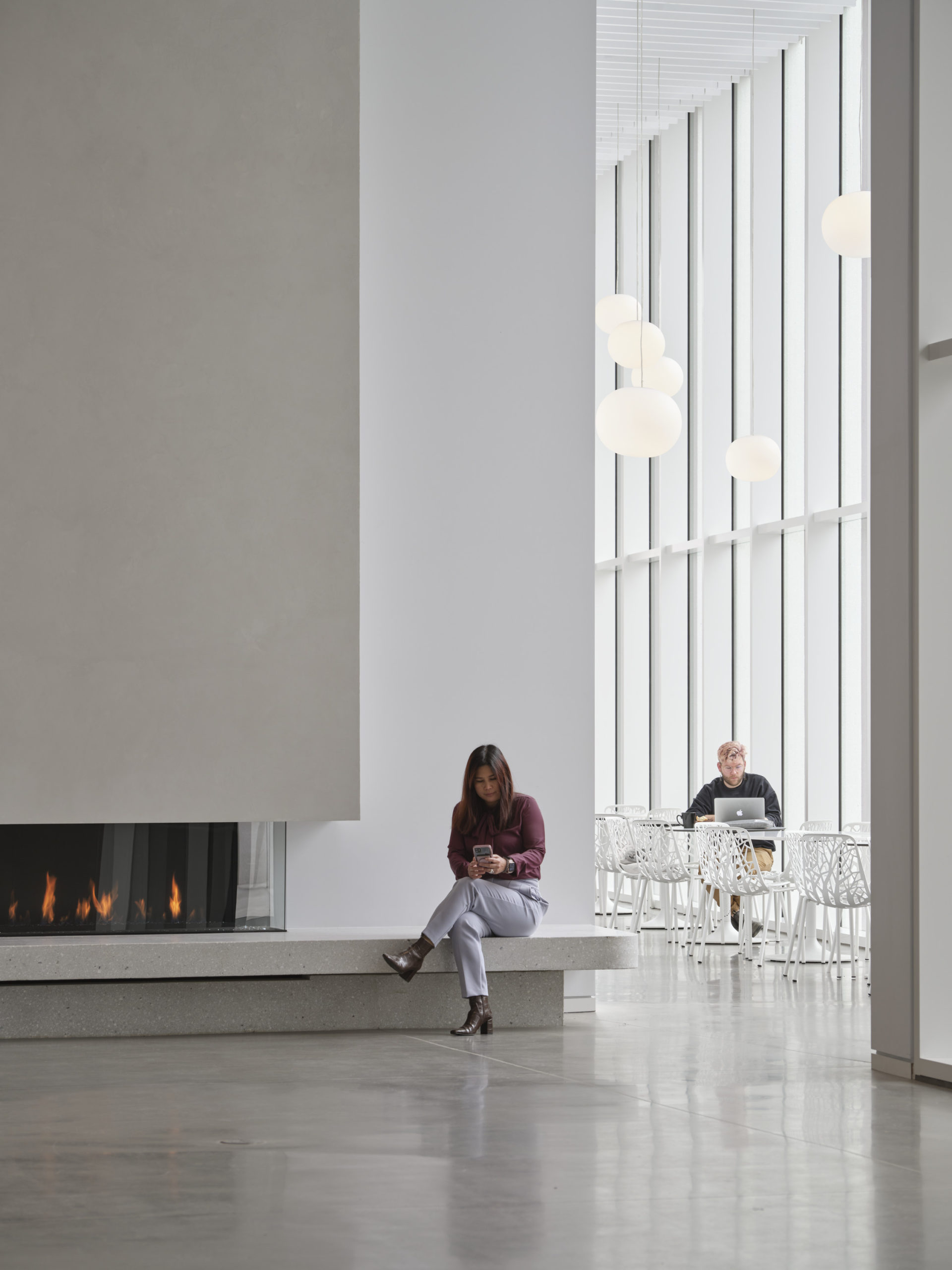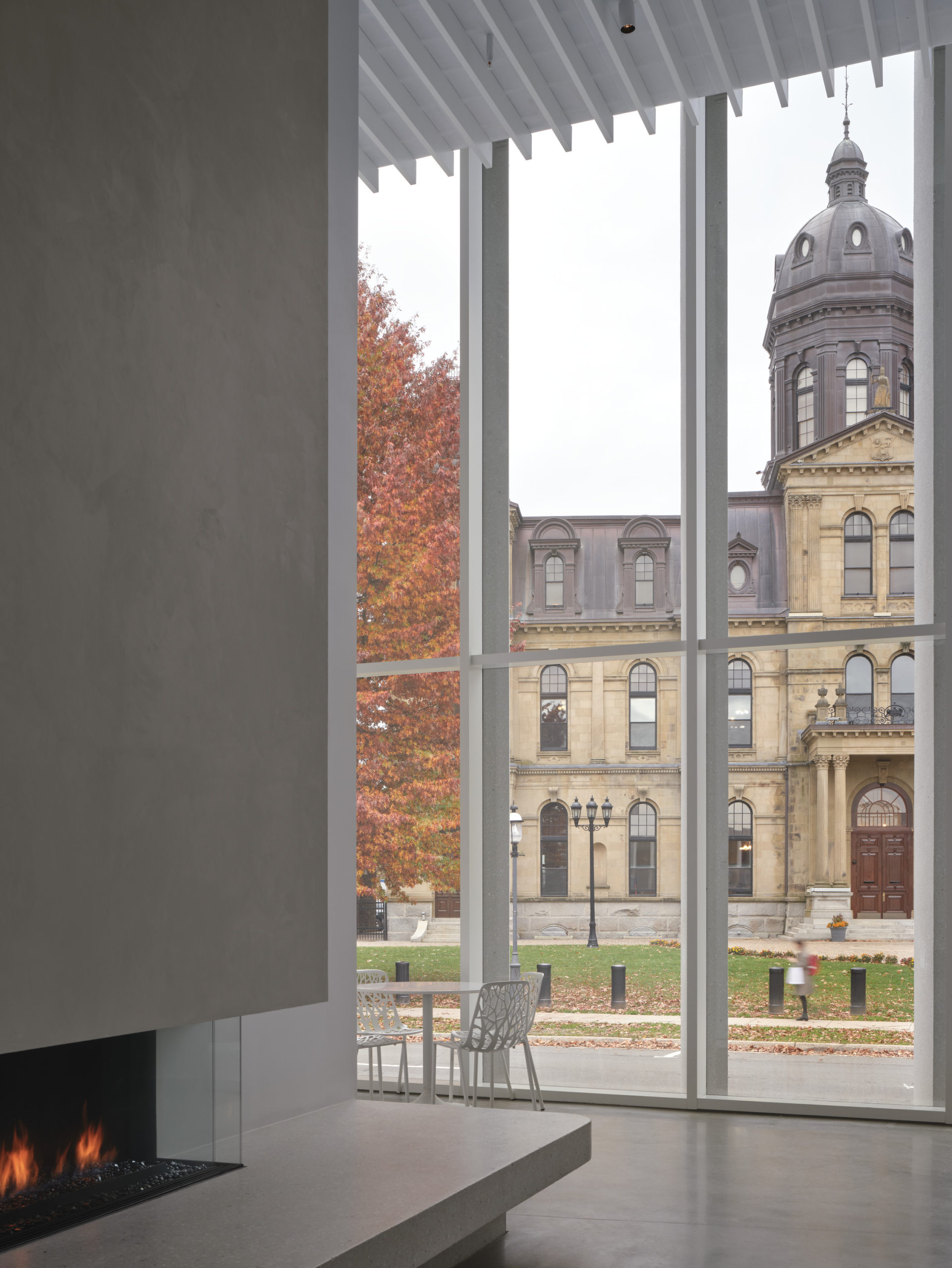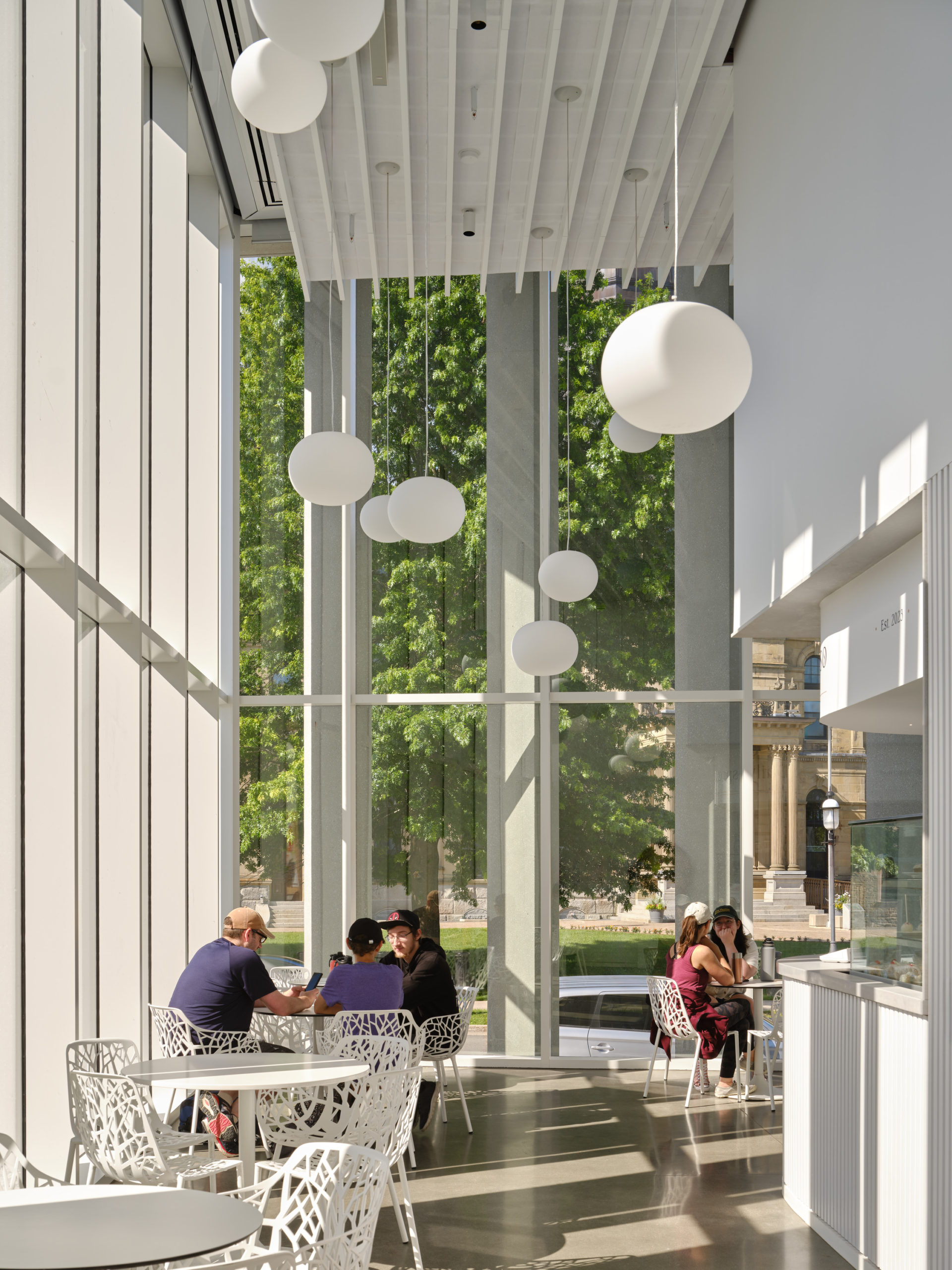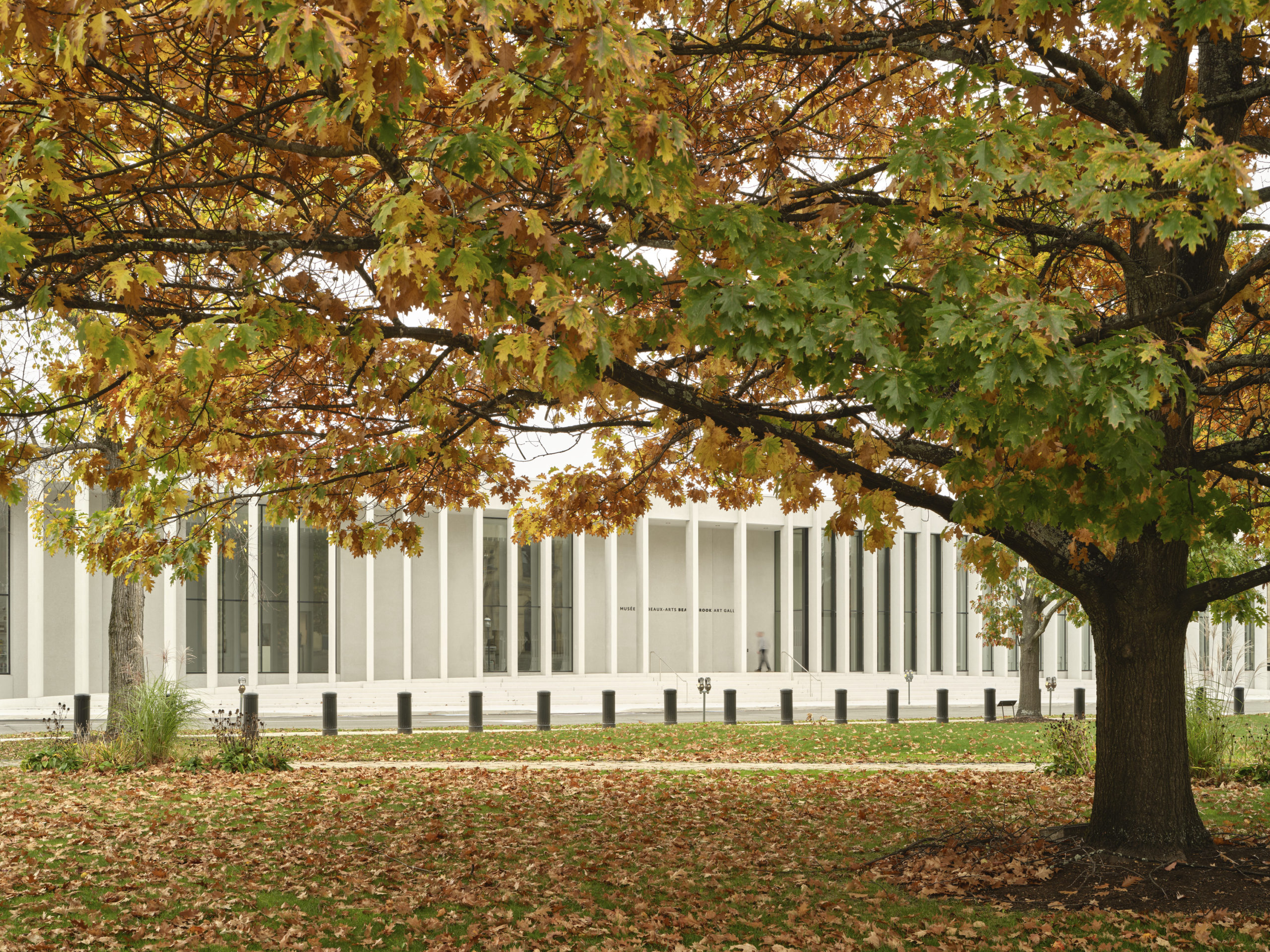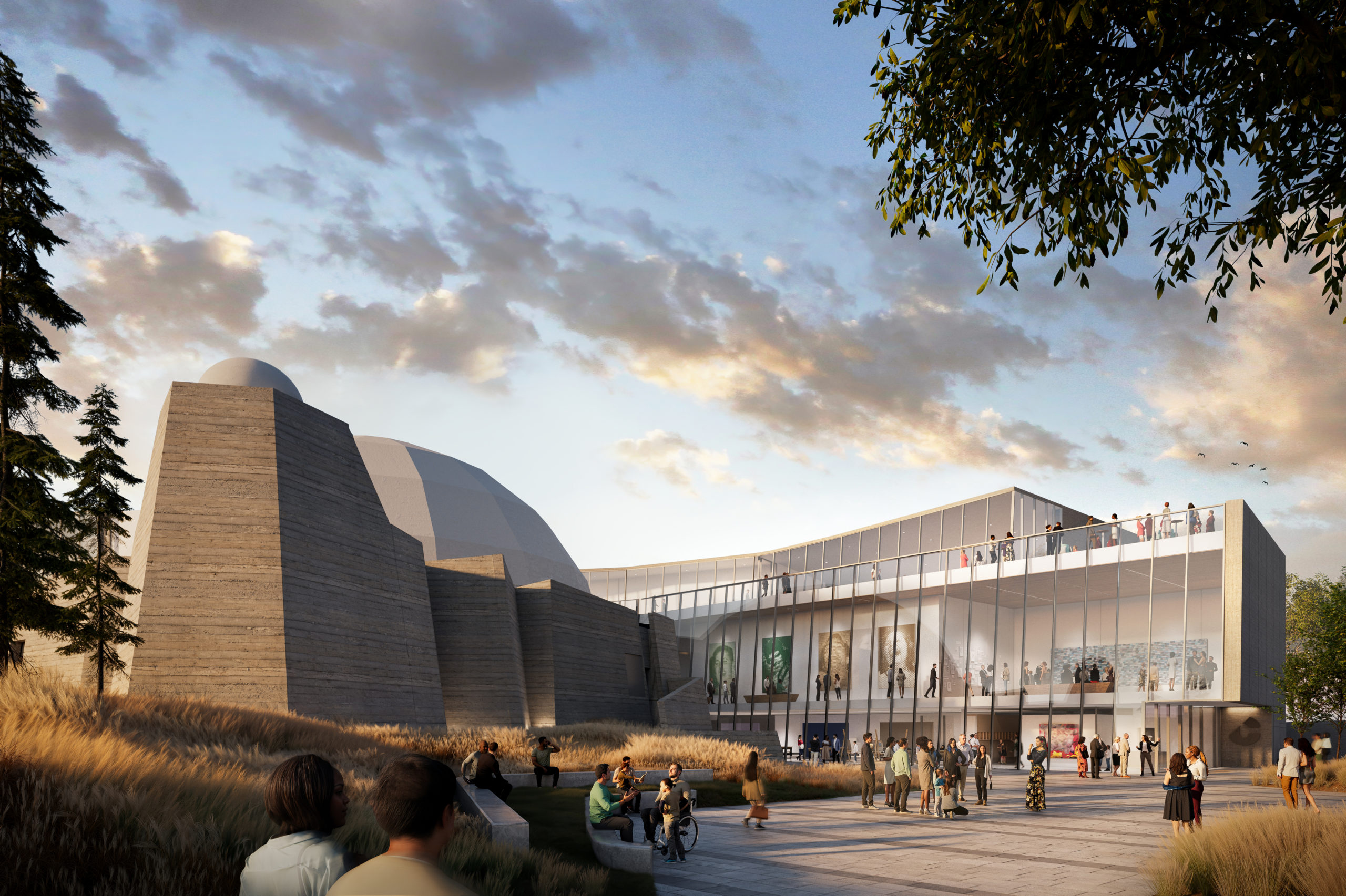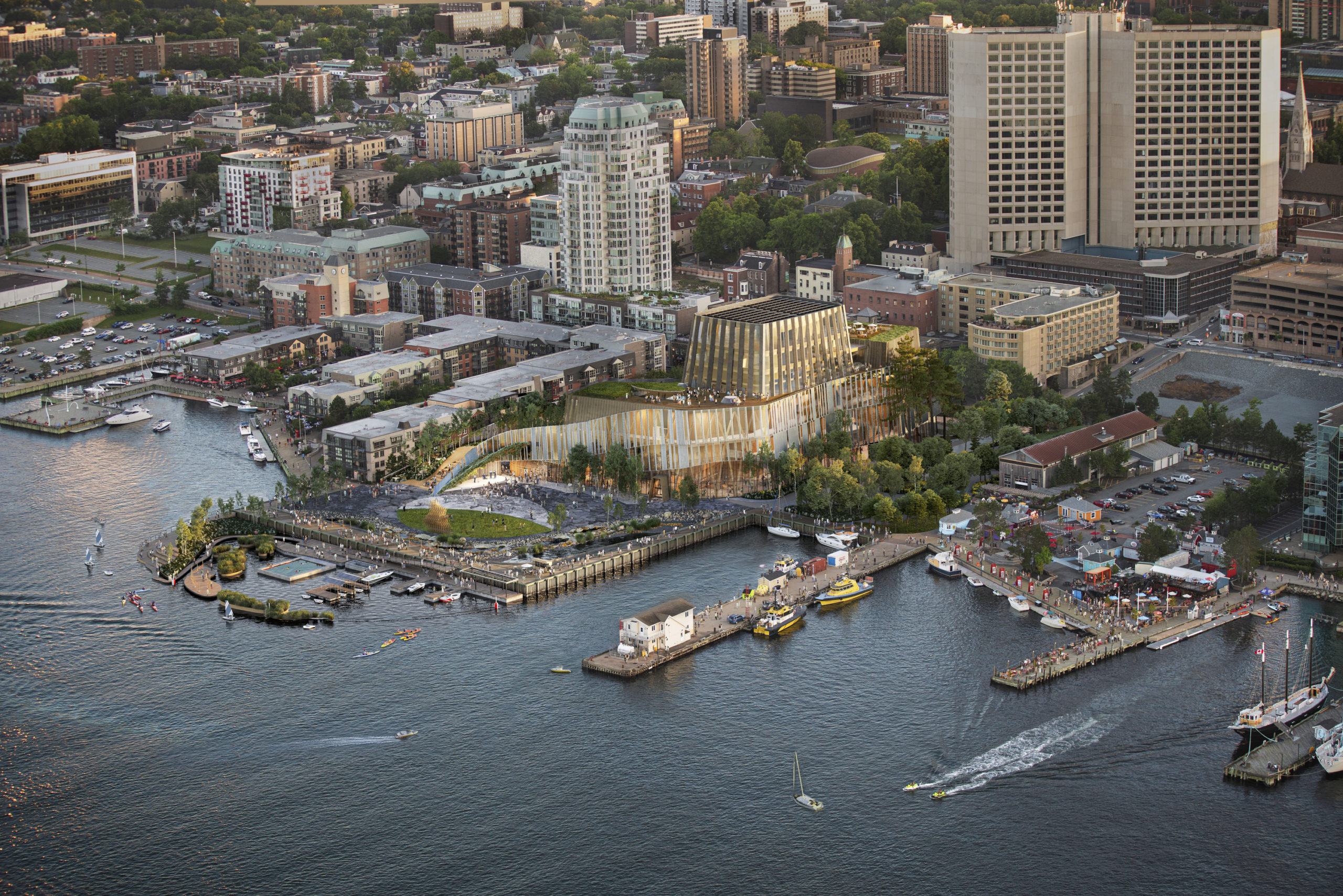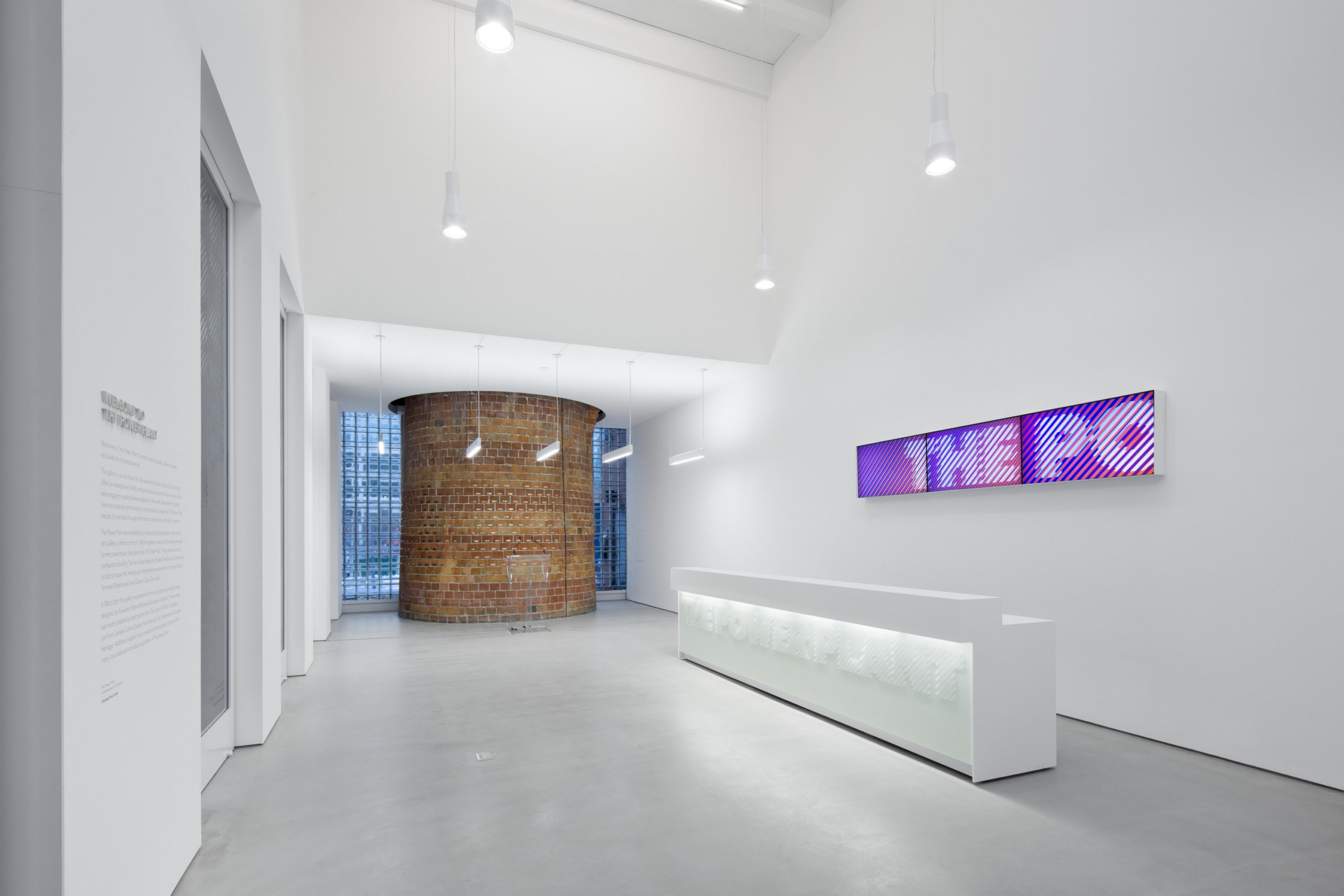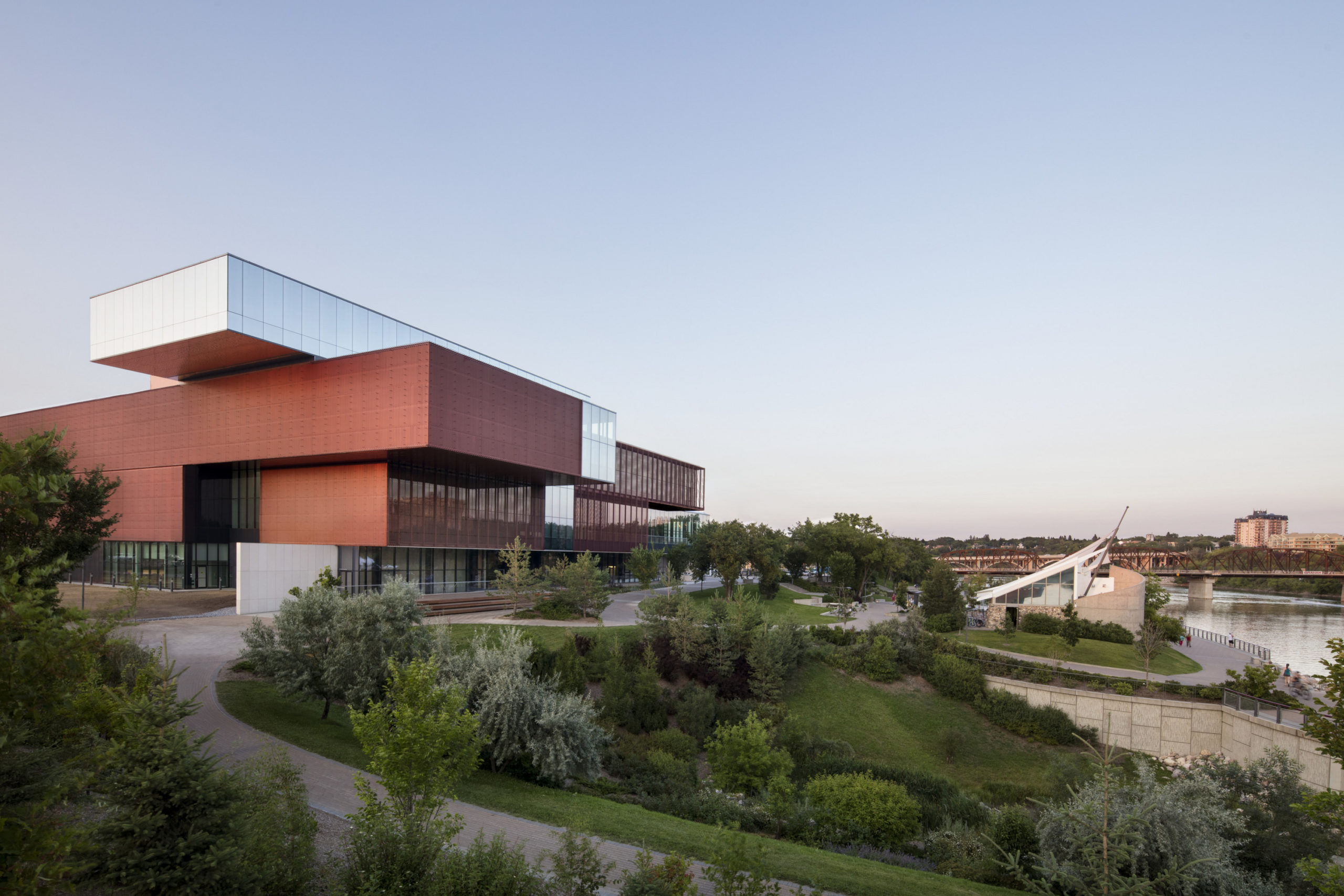Harrison McCain Pavilion at Beaverbrook Art Gallery
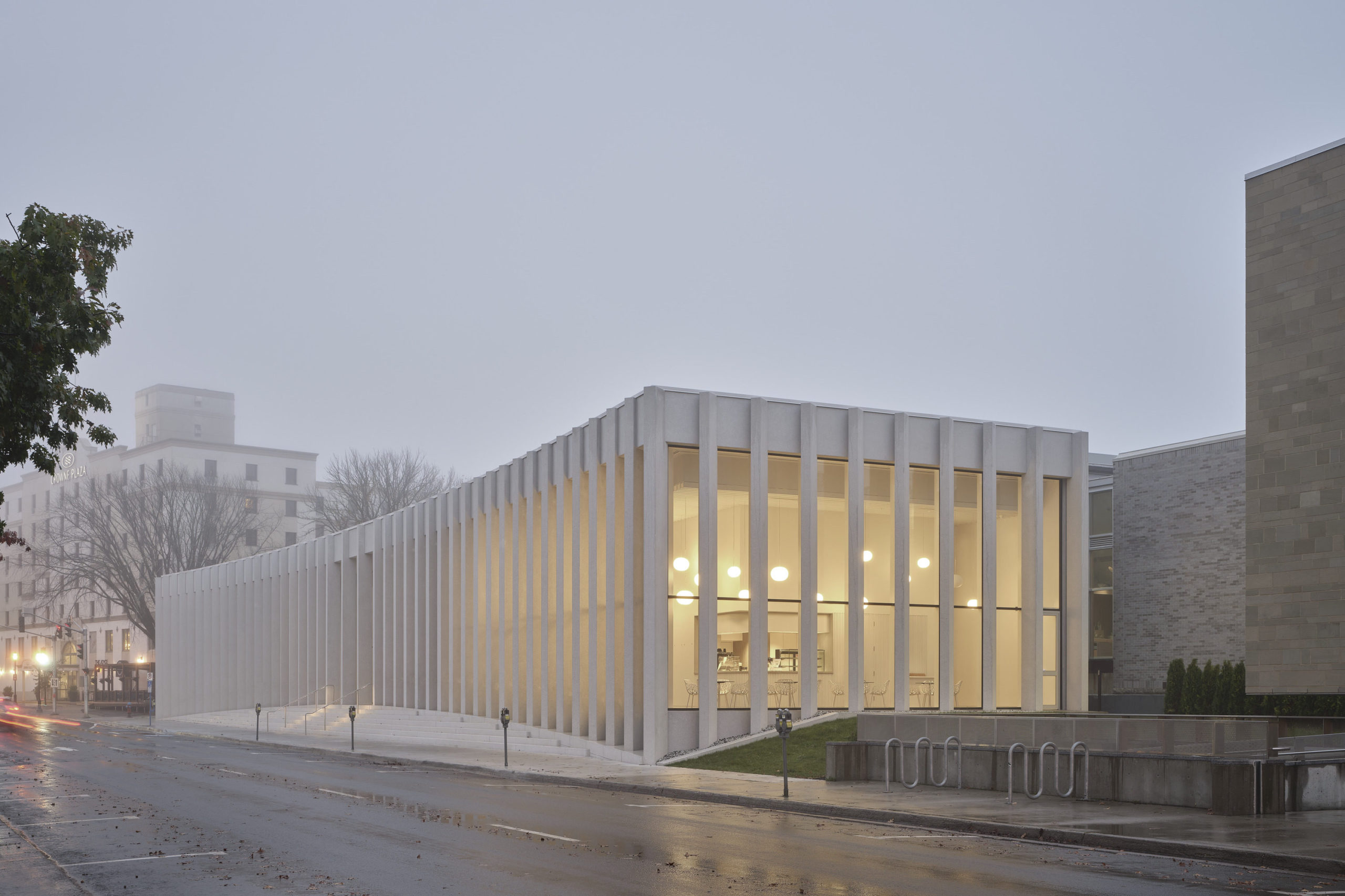
- Location Fredericton, New Brunswick
- Client Beaverbrook Art Gallery
- Completion 2022
- Size 9,000 ft² / 836 m²
- Project type Culture, Heritage, Interiors, Museum / Gallery
In an increasingly polarized world, it is even more critical that architecture be broadly inclusive, accessible, and welcoming to all. Opened in September 2022, the Harrison McCain Pavilion is a small project in scale, with a restrained budget and constructed with humble materials. Yet it has captured the imagination of the citizens of Fredericton, and has been widely embraced by its diverse communities, from the indigenous peoples who have lived there for centuries, to the new immigrants who have recently come from afar.
The new entry pavilion completes the expansion of the renowned Beaverbrook Art Gallery. Italy’s Domus magazine described it as “an art pavilion blurring the boundaries between museum and city,” in its article on the best architecture projects of 2023. It’s both the new face of the institution and a new social hub for the close-knit community.
Since its founding in 1959, the Beaverbrook Art Gallery, which began with a donation of 300 paintings by Lord Beaverbrook, has been home to an impressive and varied art collection, including works by members of the Group of Seven, Lucian Freud, and Salvador Dalí. Over the years, its collection has grown to accommodate nearly 7000 global, multidisciplinary works of art.
The pavilion is a generous multi-functional space -open to all free of charge- accommodating art exhibitions, gallery and community events, a café and fireplace seating area, reception/ticketing, and a shop. It has fast become an urban living room and a winter haven for the community.
The design was inspired by the many exceptional heritage buildings of Fredericton – both civic and residential. It’s a gateway building, located opposite the historic Legislature, marking the entrance to the city. It was imagined as a porch or loggia, resonating with the historic architecture. Sited between the vast Saint John/Wolastoq River and Queen Street, the façade mirrors the parallel curves of the river and the main street. The slight concavity of the main precast concrete façade embraces the city and invites all to enter.
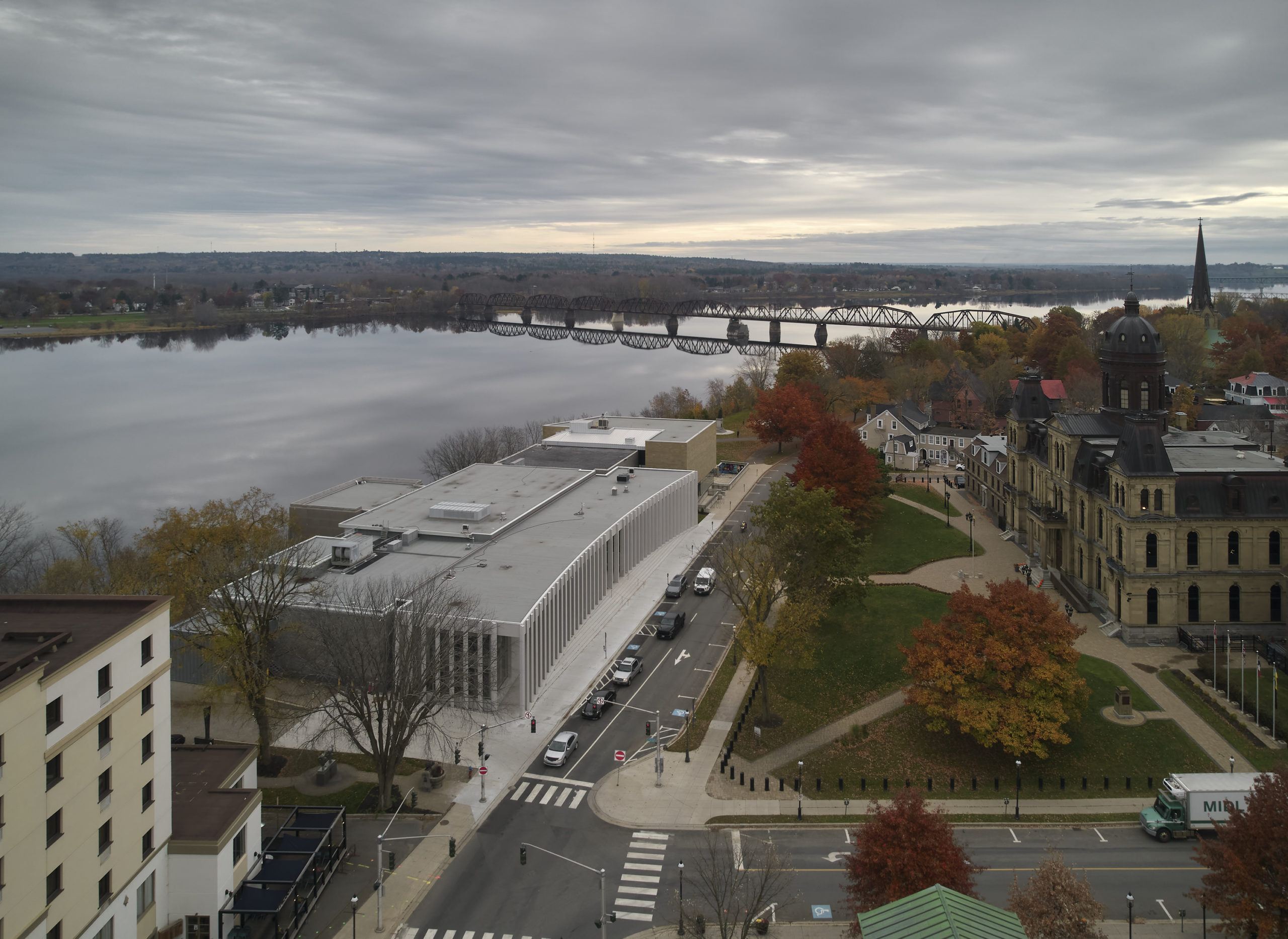
The Gallery sits in a floodplain, and as a result the existing galleries are elevated. In contrast to the monumental stairs of the original entrance, an architectural promenade was created to move the visitor up to connect with the existing galleries. It starts with the steps that run the full width of the façade (a great place to hang out in the sun) and take the visitor to the main entrance. An accessible ramp behind the colonnade also leads to the entrance. Once inside, another gently-sloped ramp connects to the level of the existing galleries.
Full height windows connect inside and outside, the colonnade acting as a brise soleil. We worked with local precast manufacturers to detail the design of the façade, to achieve the simple minimalist expression.
The columns of the main façade are spaced wider apart to mark the entrance, and they radiate slightly out from the centre towards the east and west respectively. This gesture gives the façade a kinetic quality. As one approaches the building, the columns in the foreground open to the view to the events of the interior. In contrast, the columns in the distance close up in perspective, accentuating the dynamic quality of the perspective.
The interior and exterior of the building transforms in bright sunlight, with a remarkable play of light and shadow highlighting the circadian rhythm of the day. The pavilion is a stage for civic life, inside and out.
